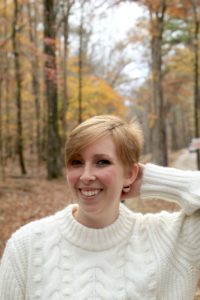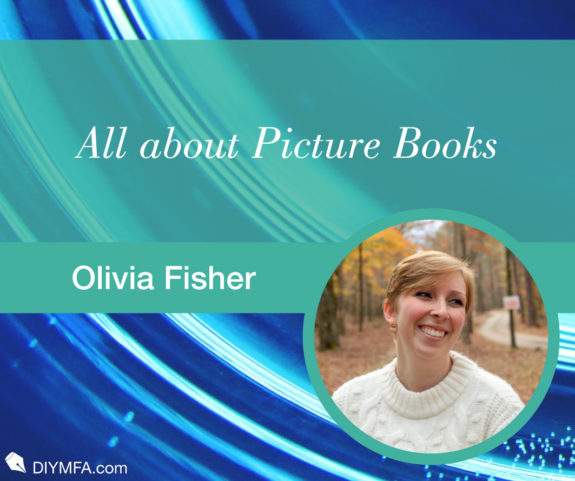Hello! Welcome back to the kid lit craft column. I’ve decided to do a series on all the different types of kid lit! That’s right! We are going to be covering everything from picture books to middle grade and in between! Today, we are tackling picture books!
Now, I’m sure we are all familiar with picture books. Big illustrations, short stories, lots of heart, and humor are sometimes packed into the briefest story. But what really makes a picture book? What’s the word count range? What is the audience’s age range? Is there a difference between board books and regular picture books? Don’t worry, we will be tackling all of that and more!
I have recently (within the last two years) gotten into writing picture books, and man, it. Is. Hard.
I would say it is harder than writing a novel. With so few words to work with, your idea has to shine, your prose has to glow, and above all, your manuscript needs to be so refined that it begs to be illustrated.
I’ve attended a couple of wonderful conferences recently where picture book authors and agents have shared with me the details of what makes up a picture book, so let’s get started.
Remember, this is not necessary a post about how to create a picture book or how to get to the point where your prose glow, but it is a post about knowing what type of manuscript you intend to create, learning who your audience would be, and providing you with more resources to advance your picture book writing career!
Types of Picture Books
If you are looking to write picture books for children, it’s important to know the different types of picture books before you start. Determining what type of picture book you are aiming to create will greatly impact how you tell the story and vice versa. Sometimes an idea takes shape on the paper or laptop screen first, and then in the revision process, you need to determine what kind of picture book it is in order to pitch it to the right agent who will scoop it up and love it as much as you do!
This overview is in no way meant to be a comprehensive look at picture books but more of a broad look at the elements that typically make up a picture book. Honestly, the more you delve into the world of picture books, the more you will see how different each picture book can be.
The Standard Picture Book
Okay, I’m using the word standard here, but it’s worth noting that there are literally so many different types of picture books. But for the sake of simplicity, I’m just going to call this section standard and group together all fictional picture books aimed at toddlers through kindergarten.
A standard picture book text can take many forms: rhyming, lyrical, narrative, concept, humor-based, simple storytelling with lots of onomatopoeia, etc…
Picture books also come in many forms and tackle many different subjects such as emotions, school, family, STEM, fantasy, and racism. But at the heart of every book is a child’s story. These books tell stories for children, especially those who cannot read. The illustrations play a crucial role in the book by showing the young reader the meaning behind the words they are hearing (maybe for the first time!).
Picture books are also typically large to accommodate both the illustrations and the parent who is holding the book with the child typically seated in their lap. All in all, they are designed with the child in mind!
Word Count: 400-900 (Although this can fluctuate depending on the story you are writing)
Age Range: 2-7
More Examples: Saturday by Oge Mora, There’s a Dragon in Your Book by Tom Fletcher, Mustache Baby written by Bridgett Heos and Illustrated by Joy Ang, and Don’t Let the Pigeon Drive the Bus by Mo Willems.
Board Book
These little cardboard books with few words and a large focus on the picture or illustration are great for little ones who might be more inclined to gnaw on the book than listen.
Board books range widely from concept books about things like numbers, letters, and colors to simple stories. Touch and feels books are popular in the board book format for babies who are exploring senses.
Some board books are republished from bigger picture books. For example, we have a copy of The Little Mouse, the Red Ripe Strawberry, and the Big Hungry Bear by Don and Audrey Wood in both board book form and regular picture book form in our house. At some point, the original picture book was reprinted into board book format although it wasn’t initially intended to be a board book.
Some popular board books include the hundreds of board books by Sandra Boynton, Sock and Shoe by Frida Bing, and Big Red Barn by Margaret Wise Brown. These little books are created to be short for babies and toddlers, who typically have short attention spans. They are a great way to introduce children to books from an early age and help build a love of literacy and reading.
Word Count: 10-200 words (although typically they are far less than 200)
Age Range: 0-2
More Examples: The Very Hungry Caterpillar by Eric Carle (board book version), Goodnight Moon by Margaret Wise Brown, Huggy Kissy by Leslie Patricelli, and Baby Touch and Feel: Animals by DK
Wordless Picture Book
Wordless picture books are only really done by illustrators, but they are beautiful! The illustrations guide the story, and the reader is free to determine what is happening. Though as a parent, sometimes I have to get creative with the story I craft from the pictures when reading to my sons.
Wordless picture books often carry strong emotional weight despite the lack of words. One of my favorite wordless picture books is 2007 Caldecott Medal winner Flotsam by David Wiesner. The book depicts underwater life in the ocean and a child’s interaction with it via a camera he finds on the beach. The gorgeous illustrations vividly depict all sorts of creatures, making it a beautiful piece of art as well as an open-ended story.
Word Count: 0
Age Range: 4-7 (though remember that these are just suggestions and not absolutes)
More examples: Journey by Aaron Becker, Door by Jihyeon Lee, and Bye, Penguin! by Seou Lee
Nonfiction
Nonfiction picture books can cover a variety of topics from people to science and in-between. These books are typically longer and aimed at older children.
One thing that sets nonfiction apart from fiction picture books is research. I’ve heard nonfiction picture book authors at conferences talk about how much research they did to craft their picture book. Since you are telling a real story or presenting information on a real-world topic, it is important to research accurate information because if you don’t, I guarantee you an editor will, and you want to make sure you’ve done that work yourself ahead of time.
Nonfiction picture books are fantastic for sharing history, people, and places with children who are taking all of these concepts in for the first time.
Word Count: 500-2,000
Age Range: 5-8
More Examples: Bones in the Whitehouse: Thomas Jefferson’s Mammoth by Candice F. Ransom and illustrated by Jamie Christoph, Teatime Around the World by Denyse Waissbluth and illustrated by Chelsea O’Byrne, and Digging for Words: Jose Alberto Gutierrez and the Library He Built by Angela Burke Kunkel and illustrated by Paolo Escobar
What Type of Picture Book Creator are You?
A few important questions to ask yourself if you are interested in creating picture books are are you an author? An illustrator? Or an author-illustrator?
In the publishing industry, there are different approaches to how you can create a picture book and find the right agent for it. If you are an author, you will only write the manuscript with sparse illustrator notes, leaving a lot of flexibility for an illustrator to come in and work their magic.
If you are an illustrator, you might be contracted through a publishing house or through your agent to illustrate for a manuscript that is being published. Illustrators typically have portfolios that display their various artistic pieces and their distinct style.
If you are an author-illustrator, you write the story and illustrate it. This is typically done by creating a story dummy that shows an agent or editor what the story and art will look like.
Whatever you are, always make sure you are putting your best work forward!
Now that you know all the different types of picture books, as yourself what kind of picture books are you interested in writing? If it’s nonfiction, that will require more research and a unique angle from which to tell the story, which is different from writing a fictional picture book with lots of humor. Determine the type of book you want to write and learn more about the type of picture book as you work on your draft.
Good Resources for Picture Book Writers
So, where can you go to learn more about picture books and refine your craft? Here are a few great places to get you started!
- Writing Picture Books: A Hands-on Guide from Story Creation to Publication by Ann Whitford Paul. I love this book. It has been my guiding light as I navigate the world of picture books writing. Ann Whitford Paul, a well known children’s picture book author gives all sorts of great exercises and seasoned advice on how to craft, draft, revise, and then query your manuscript.
- The Society of Children’s Book Writers and Illustrators (SCBWI). This international organization provides so many resources for both new and experienced children’s book writers and illustrators. From virtual conferences, regional critique sessions, and The Book (a book created by the society full of agents, query suggestions, and manuscript formatting guides).
- 12×12 Challenge. I just learned about this fabulous challenge this year from a critique partner of mine! 12×12 is a year-long challenge where members try to write a complete picture book each month for the entire year. Believe me, it’s way harder than it sounds!
- Reading lots of different picture books. There is honestly no better way to learn about picture books than by reading them! Read lots of picture books of different kinds. Read some by author-illustrators. Read some by authors and a separate illustrator. Read funny picture books, sad picture books, rhyming picture books. Just read. I can guarantee it’s one of the quicker and more enjoyable ways to improve your craft.
Now, while I’ve outlined for you things like word count ranges, types of picture books, etc. know that in writing, a lot of things are flexible, such as word count. I’ve been to conferences where agents and editors have reminded me that just because a certain type of picture book has a word count range doesn’t mean you can’t bend that a little to tell your best story. Hopefully, this gives you a jumping-off point for your writing!
Next up, I will be covering chapter books!
Tell us in the comments: Are you a picture book writer or interested in writing picture books?

Olivia Fisher is a children’s lit writer and freelance editor with an English degree from BYU-Idaho. When she isn’t dreaming about living in a treehouse or chasing down her two young boys, she enjoys curling up with a book, watching Star Wars, writing her next adventure, and trying to live in the state of child-like wonder that we all secretly, or not so secretly, miss. Follow her adventures on Twitter or Instagram, or hire her for your next editing escapade on Fiverr.







